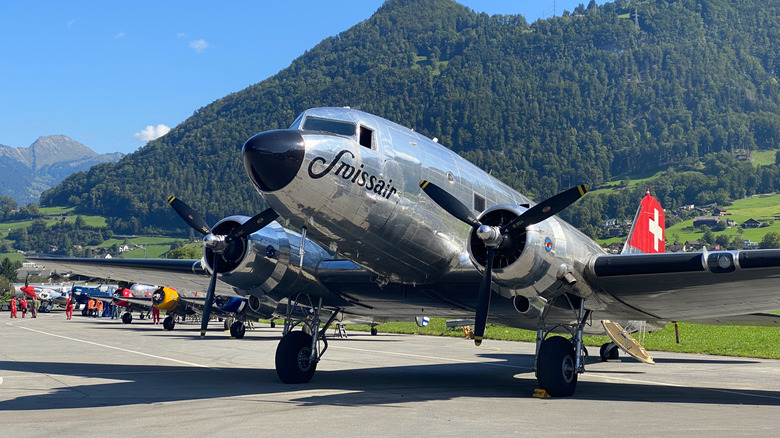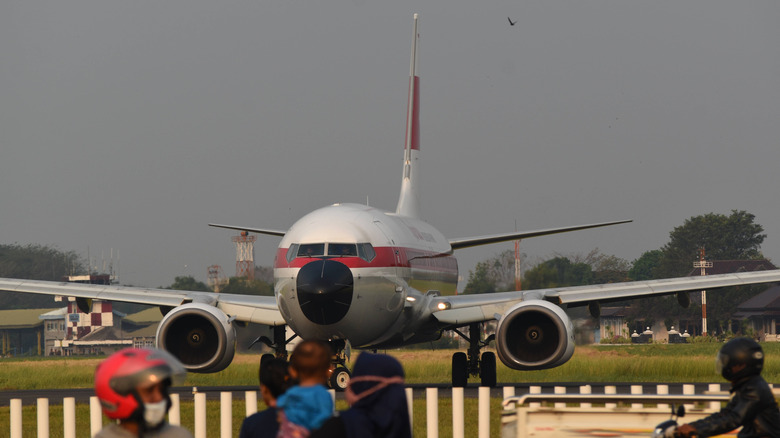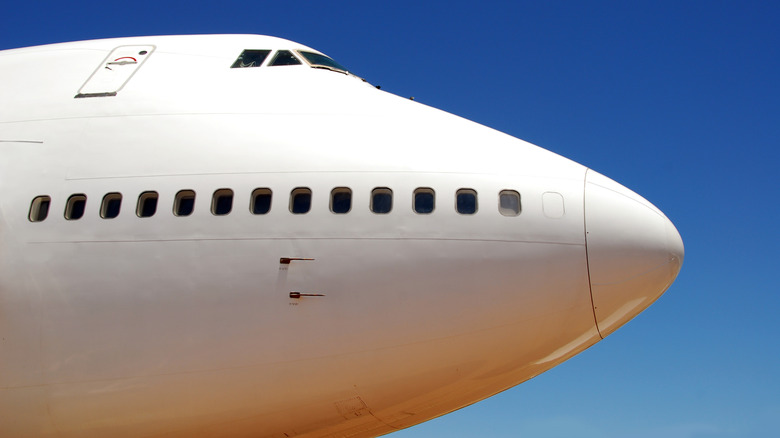Why Did Old Airplanes Have Black Noses?
Even if you're not an aviation nerd, chances are you've wondered about some of the quirks of flying — like why your phone has to be in airplane mode, or why cabin crew insist on open windows during takeoff and landing. But beyond those in-flight rules, there's plenty to be curious about when it comes to how airplanes are actually designed.
In many ways, planes haven't changed much in form for over half a century — the wings, the tail, the general shape have all stayed surprisingly consistent. But look closer and you'll see a host of details that have evolved. Take the noses of old aircraft, for example. Many vintage planes, especially military ones, had distinctly black noses, but it's a design detail you don't see as often on modern jets. We did some digging to find out why, and as it turns out, there were a few practical reasons behind the look.
A nose for the radar
One of the primary reasons vintage aircraft sported black noses was to accommodate their radar systems. Radar became a game changer for navigation and weather tracking in WWII — a turning point that changed the course of the war. The equipment had to sit right at the front of the aircraft, inside a smooth, rounded section called a radome (a portmanteau of "radar" and "dome").
Early radomes were made of metal, but that didn't work because metal blocks radar signals. So engineers switched to non-metallic materials like fiberglass or other composites that let radar waves pass through. But those materials weren't very tough. At high altitudes, they took a beating from UV rays, ice, and extreme temperatures. To protect them, engineers applied a conductive black coating designed to safely drain static electricity and shield the surface from weather damage. Many of these conductive coatings were carbon-based, such as Electrodag, which is inherently black due to its graphite content.
There was another upside. Many early aircraft had shiny, bare-metal exteriors to minimize drag and improve fuel efficiency. But under direct sunlight, all that polished aluminum could bounce glare straight into the cockpit. A matte black nose helped absorb the reflection. Eventually, aircraft design evolved, and their exteriors followed suit. Airlines began painting entire planes to reduce corrosion, improve branding, and unify fleet visuals. However, early paints were often lead-based, which meant they contained metal compounds that interfered with radar. Conveniently, black paint rarely contained lead, so it replaced the rubber and became the go-to finish for nose cones.
Why modern planes don't have black noses
So why don't most planes have black noses these days? Great question. The short answer is that aviation got smarter. Starting in the '80s, the military moved toward low-visibility paint schemes — dull, radar-absorbent finishes that helped jets slip under the radar, literally. As stealth aircraft technology evolved from the F-117 Nighthawk to today's B-21 Raider, those full-body matte coatings made the old black nose panel redundant. No need for a separate anti-glare strip when the whole plane's dressed for invisibility.
Civilian aviation has evolved, too. Modern weather radar systems have dramatically improved, especially over the last two decades. Today's radars can operate accurately through a broader range of materials and colors, which means the radome no longer has to be black for optimal performance. Paints with metallic compounds are still avoided, but airlines can now ditch the utilitarian black in favor of brand consistency without sacrificing radar performance.
That said, the black nose isn't entirely extinct. You might still spot it on some iconic fighter jets like the F-16 or F-35, as a nod to legacy design. Some commercial planes might also still feature black paint just beneath the cockpit windows as a sort of anti-glare panel, much like your car's matte-black dashboard.


